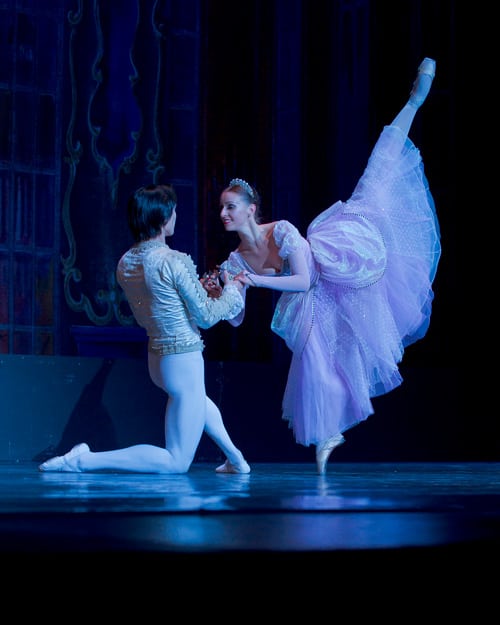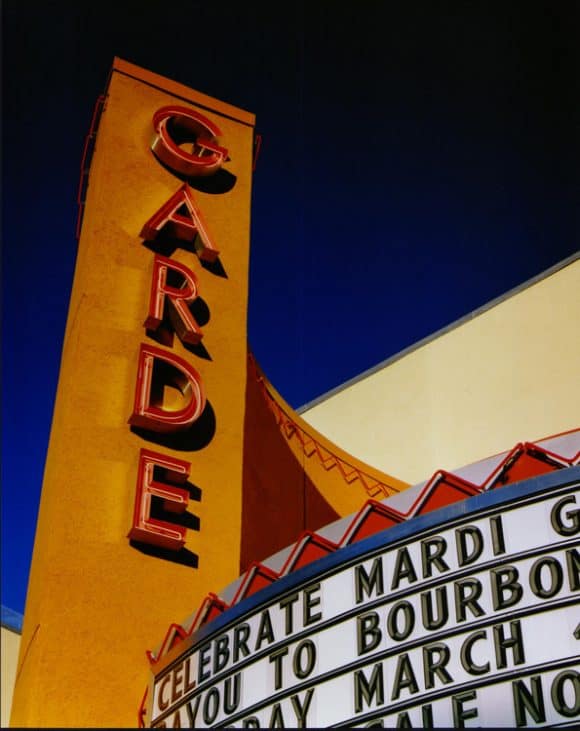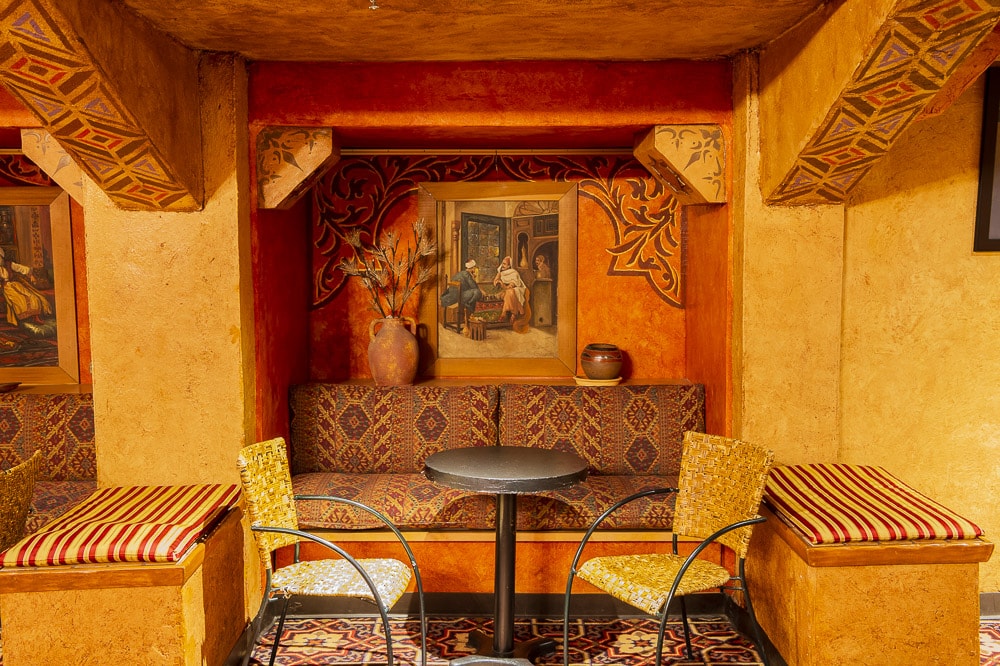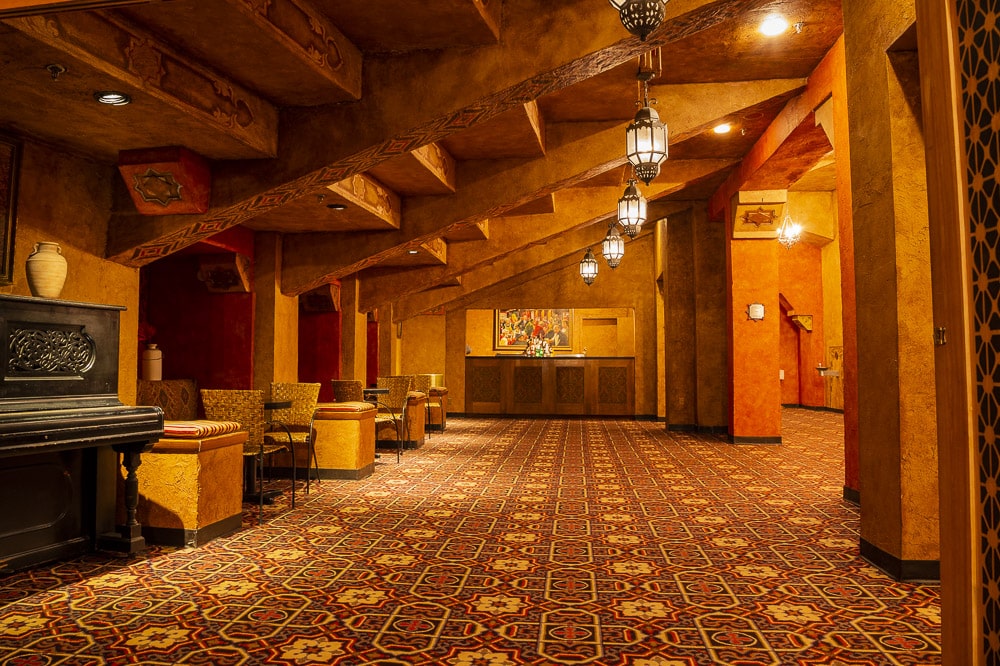About
Southeastern Connecticut’s non-profit home for the performing arts, cinema and education, the Garde Arts Center was founded in 1985 to save, restore and operate in the heart of downtown New London the historic (1926) Garde Theater and Building as a regional cultural gathering place and economic catalyst.
Our Mission
The Garde Arts Center strives to engage, enrich, entertain, educate and inspire the region of greater New London County, by:
- Protecting, operating and enhancing the historic Garde Theatre and its facilities as a central cultural gathering place and educational resource,
- Presenting top-quality performing arts and film events,
- Fostering community arts organizations,
- Providing educational opportunities in and through the arts, and
- Strengthening community interaction and vitality

The Garde Arts Center owns a city block of adjoining buildings – The Garde Theater and Building, the Mercer Building, the Garde Building, and the “Garde Cottage” – the centerpiece of which is the historic 1420-seat Garde Theater.
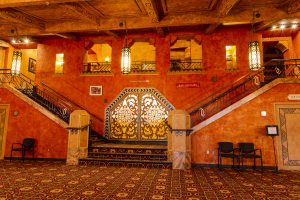
Nationally recognized for its unique architecture and dynamic programming, the 1420-seat Garde Theater is one of the few remaining theaters built during Hollywood’s golden era of motion pictures and vaudeville.
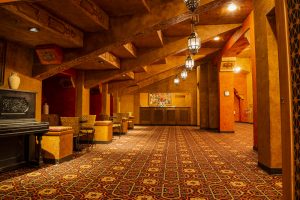
Its restored Moroccan-style interior and expanded lobbies and function spaces provide an exotic and comfortable venue with a warm and inviting atmosphere for arts and both public and private events.
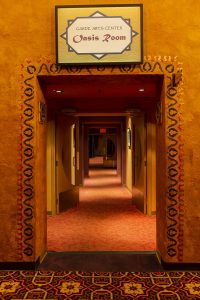
The former second floor of the Garde Office Building was transformed into the Oasis Room a 110-seat music and function hall, with a stage and catering kitchen, directly connected to the mezzanine lobby of the Garde Theater.
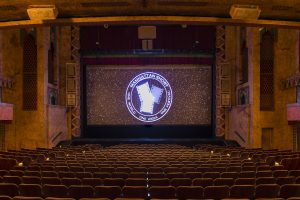
In 2014, a community campaign preserved the Garde’s legacy as a pre-eminent movie house with a new state-of-the-art 4k digital cinema and eight-channel surround-sound system. Under the brand The Garde Cinema, the real movie palace experience, new, contemporary, independent and classic films are showcased on the giant Garde movie screen.
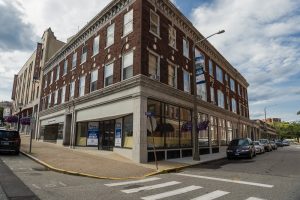
The Mercer Building is currently home to the New London office of Garde architects Silver Petrucelli and Garde offices.
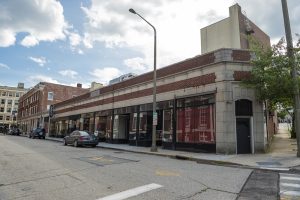
The Meridian Building houses commercial and non-profit enterprises.
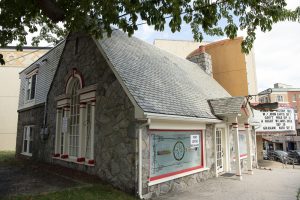
The “Garde Cottage” on the corner of State and Huntington Streets is currently home to Writers Block Ink.
Performing Arts and Cinema: The Garde presents the best in performing arts including national Broadway musical tours, headliner entertainment, dance, opera, family and special events and authors. Contemporary, classic and independent film, as well as movie premieres, are featured on a giant screen with state-of-the-art digital projection.
Event Rentals: Constituent presenters at the Garde include the Eastern Connecticut Symphony Orchestra, Eastern Connecticut Ballet, The Connecticut Lyric Opera, the Salt Marsh Opera, New London Public Schools and other school districts, and other local arts organizations and performing arts schools. The Garde is also a prized location for political debates, educational forums, civic gatherings, graduations, fundraising events, meetings, conferences, expos, weddings, parties, receptions, and other private uses.
Community and Education: The P:ACE initiative– Partners: Arts, Community & Education – strategically links Garde programs and services with artists, students, and community and social service organizations. Programs include a school time performing arts series, Summer on Stage, Passport to Literacy, New London Talent Show, and various school and community partnerships.
The Garde Arts Center was created in 1985 as a non-profit performing arts organization to save and reuse the historic Garde Theatre, one of the few remaining historic movie palaces in Connecticut. Built in 1926 during the golden era of motion pictures and vaudeville theatres, the recently restored Moroccan interior of the Garde Theatre, along with the new seats and state-of-the-art stage equipment, provide a very audience-friendly theatre venue in a warm and beautiful atmosphere. Today the Garde is becoming nationally recognized for its unique architecture and multi-faceted programming.
The Garde Arts Center is not just the Garde Theatre. It has become an “arts block” of historic buildings, which are all being transformed into a multi-space center for arts, education, commerce, and community events. The four-story Garde Office Building, which has been one of the most desired professional and commercial buildings in New London for decades, has been transformed into expanded lobbies, box office space, and a 130-seat performance and function hall called the Oasis Room. The three-story Mercer Building provides offices for Garde administration, classrooms for ISAAC, the neighboring charter middle school, and a historic function hall that is slated to become a performance space. The one-story Meridian Building houses commercial and non-profit businesses as well as stage support space. The oldest building on the block is the “cottage” at 345 State Street. Built in 1920 by Connecticut Power, the building currently houses Title IX, an independent satellite book store operated by Bank Square Books.
Building the Garde Theater
The Garde, Meridian, and Mercer buildings were all built between 1924 and 1926 on the site of the baronial mansion of whaling merchant William Williams. The Garde Theatre sits on a portion of the Williams estate that was purchased from the Williams family by Theodore Bodenwein, the founder of The Day newspaper. The newspaper magnate sold the land to the new theatre developers so that something would be built “for the good of New London.”
The Movie Theater & Vaudeville Theater
The theatre was built during the height of the movie palace era as a “photoplay house” by architect Arland Johnson, under the direction of Arthur Friend, a New York movie studio attorney, who was building six movie houses in Connecticut and Massachusetts. Named after Walter Garde, a Hartford and New London businessman, the Garde Theatre opened on September 22, 1926, with the silent film “The Marriage Clause,” starring matinee idols Francis X. Bushman (1883-1966) and Billie Dove (1903-1997). The Garde was hailed by the press of that time as “one of the finest theatres in New England” Typical of the era, the theatre was a stage for vaudeville as well as film. Variety acts of music, comedy, acrobats, and magic were interspersed between the showing of feature films, comedy shorts, and newsreels.
For decades, the Garde Theatre played a central role in the community life of New London and Southeastern Connecticut. Its ornate Moroccan interior, giant screen, and marvelous acoustics ensured that Warner Bros., who purchased the Garde for $1 million in 1929, would maintain it as one of the region’s most stunning and viable movie theaters. The Garde’s nontheatrical events included a national touring production of the play Tobacco Road in February 1953 and a televised showing of the Sonny Liston-Cassius Clay boxing match in October 1964.
Formation of The Garde Arts Center, Inc.
As New London faced the growing competition from suburbanization and malls leading to a decline in its economic health, the Garde also fell victim to declining retail, malls, multiplex cinemas, and television in the ’60s and ’70s. Despite occasional blockbuster attendance like the 1971 screening of The Godfather, declining attendance forced RKO-Stanley-Warner to close the theater in 1977. In 1978, it was sold to a locally owned business Robertson Paper Box Company who, after attempting to operate the theater regularly, sold the building in 1985 to the newly created non-profit Garde Arts Center, Inc.
The Garde’s Return
In 1987, the Eastern CT Symphony Orchestra made the Garde its new home. 1988, the Garde hired its first executive director, Steve Sigel, and began presenting a full spectrum of performing arts series: dance, musical theatre, contemporary music, and family events. Notable performances from that period included Marvin Hamlisch, Itzhak Perlman (both in 1989), Johnny Cash and Tony Bennett in 1990, The London Symphony Orchestra conducted by Michael Tilson Thomas in 1992, and two sold-out concerts by Bob Dylan in 1998.
In 1988, the State of Connecticut awarded $750,000 to replace the theatre heating and air-conditioning system, the first of several major facility grants three successive Governors shepherded through for the Garde. The Mercer and Meridian buildings were purchased in 1993. In the summer of 1994, movies were added to the Garde’s live programming. That year began a $15.75 million fundraising effort – Campaign for the Garde 2000 – to restore and expand the theatre. In October 1998, the Garde opened with its new lobbies and storefronts and, one year later, the theatre opened with the theatre interior restored. The Oasis Room began to be consistently used by 2008, primarily for jazz, folk, and popular music.
Why Morocco?
The architecture and decorative elements of the Garde Theater have a feeling of a distant place, specifically that of Morocco and Northern Africa, reminiscent of Islamic art and architecture in its simpler period when Bedouin Arab influences prevailed.
When the audience sat down in their seats, they were transported to a palace in Morocco or a temple in Marrakesh. Exotic bas-relief murals adorn the auditorium sidewalls, depicting caravans traveling along the desert to ports of call, dancers in their colorful attire, and ladies browsing for the unusual in the marketplace. The stencil work on the ceiling and balcony are reminiscent of palace and temple ceilings and the design is similar to Bedouin carpet patterns.
The Garde’s original Moorish decor and palatial design was typical of the “exotic” movie palaces of the 1920’s, which attempted to create a far-off land of mystery, romance, and glamour, many in Egyptian, Asian, and Aztec themes reflecting the fascination with archaeological discoveries of lost worlds during that time. The 1920’s was a period in which the world was fascinated with news of discoveries of ancient civilizations in the Mideast, Africa, South America and Asia. Many of the movies as well as the movie palaces tried to capture the cultures of those “new worlds”.
Mommy, Look at the Elephants!
The murals on the side walls of the lower auditorium and balcony levels are unique to the Garde Theatre and play a much more intricate part of the theater’s decoration. They are a combination of traditional painting method and bas-relief, in a loose and spontaneous style. The 3-dimensional bas-relief had been used primarily for the figures of people and animals while the other details (mountains, sand dunes, and sky) have been painted.
The artist who originally created the murals was Vera Leeper (1899-1969), whose work at the Garde was featured in the following extract from an article in the New London Day, September 1, 1926:
Something new is found in the interior decoration of the Garde theatre in that the cement walls and ceilings are finished without artificial filling. The color scheme is devoid of bright gilt but is of pleasing quiet tone, giving a cool effect, with designs and scenes from the Orient. The ceiling background is of a dull orange color with the beam work standing cut with quiet Oriental designs in figures. On either side wall are depicted desert scenes with a beautiful perspective on a mountainous background brought out in harmonious contrast to the foreground desert effect. In panels on either side of the interior are portraits separate in themselves but in harmony with the general decoration plans.
The interior decorating was done by Miss Vera Leeper of Denver, Colorado. Clad in knickers and painter’s frock she could be seen day after day adeptly crawling along and through the mass of stage work that completely filled the interior of the theatre during the decorating work.
Through the work of Miss Leeper the Garde theatre is the first in the country to be decorated by means of a commercial product known as morene and applied with a knife instead of a brush. The new substance is mixed with colors to obtain the desired color effect and plastered on the rough cement walls with a knife, giving the effect of a bas-relief, a distinct advantage over the flat paint scheme. Patrons of the new theatre will be astonished when they see for themselves the magnitude of Miss Leeper’s art.
Leeper devoted her later years utilizing shadow puppetry to teach Native American children in the Southwest about their heritage. The Garde Theater is the only remaining theater that has her work.
Restoration
The firm of Hannivan and Company, from Toronto, began planning the restoration of the lobbies and auditorium in 1995. At the time, all the walls and ceilings, except for the ceiling of the auditorium, were painted white. Much of the plaster and brickwork was badly damaged by weather and overpainting, making a return to the original impossible without causing further destruction.
Other than two auditorium photographs, there were no exact descriptions, drawings, or pictures of the original theatre design. The Hannivans had to scrape and explore wall, ceiling and floor surfaces to uncover what the original designs and color schemes might have been. Where there was no direct evidence of pre-existing designs, the Hannivans were asked to carry out the intent of the original decor.
The actual restoration was done by a crew of young people trained by Hannivan, including students from Lyme Academy of Fine Arts, Connecticut College, and the community at large. More than 60 volunteers were trained by Hannivan in rag painting and stenciling. The murals on the side walls were restored by scenic painter, Elaine Mills, of Stonington. The African masks above the murals were recast by a recent Connecticut College graduate and sculptor Jennifer Collins. Collins also created the molds and built the pieces for the decorative tile work on the walls and arches, and the theater door hardware.
The restoration of the auditorium had to incorporate contemporary lighting and sound technology as unobtrusively as possible while not covering up the restored wall murals. With the assistance of Sachs Morgan Studio, NY theater consultants, a variable acoustical treatment to “tune” the hall to everything from symphony to rock to Broadway was devised: Moroccan-style arches and valences that frame removable curtains. A series of filigree arches with custom-made decorative ornamental plaster finishes around the sides and rear of the orchestra seats create a Moroccan courtyard effect, from which desert scenes can be seen in the distance.
New Expanded Lobbies
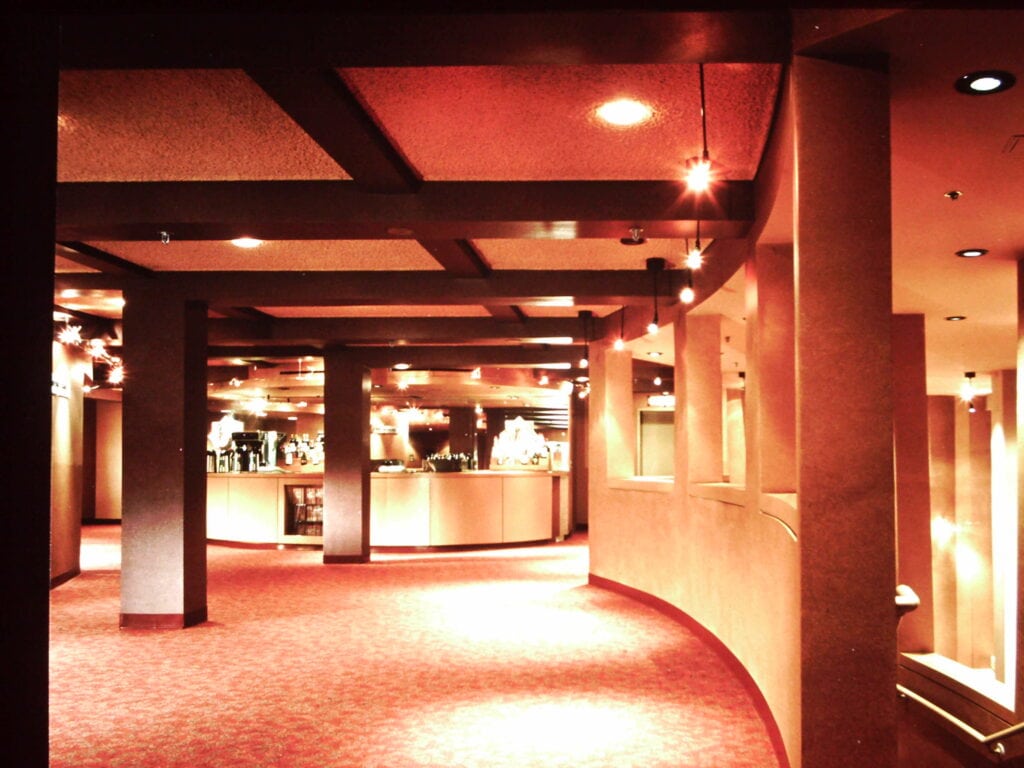
The outer lobbies are a new structural addition designed by Centerbrook Architects (CT) created out of three storefronts of the Garde Office Building, which were originally separated from the former theatre lobby by thick brick and concrete walls. A floor was inserted in the middle of the high-ceiling storefronts for new and expanded restrooms and two large, curved concession stands. A third set of doors into the auditorium was added on the east side of the restrooms. The lower portion of the former storefront space is an additional lower lobby, accessible by elevator and a curved stair.
The upper lobby, now called the Pfizer Mezzanine, was expanded by moving the existing restrooms out of the mezzanine into the adjacent 2nd floor of the former office space, which was renovated as the Oasis Room, a 2,500 sq. ft performance and function hall with a catering kitchen.
Mercer, Meridian and “Cottage” Buildings
The three-story red brick and terracotta Mercer Building, directly adjacent to the Garde building, was purchased in 1993 as an important component of the Garde’s planned theater expansion. Today two Mercer storefronts house the Garde Gallery, and an art gallery occupied by New London Main Street, with the second floor occupied by Garde administrative staff. Built in October 1923 and designed by acclaimed New London architect Dudley St. Claire Donnelly, the Mercer was declared “one of the most beautiful and substantial store and office buildings in the city”. The Mercer storefront at the corner of State and Meridian, was first occupied by a restaurant – The Garde Catering Co. – which connected to a large (72 feet by 33 feet) banquet hall with four large weatherproof skylights.

